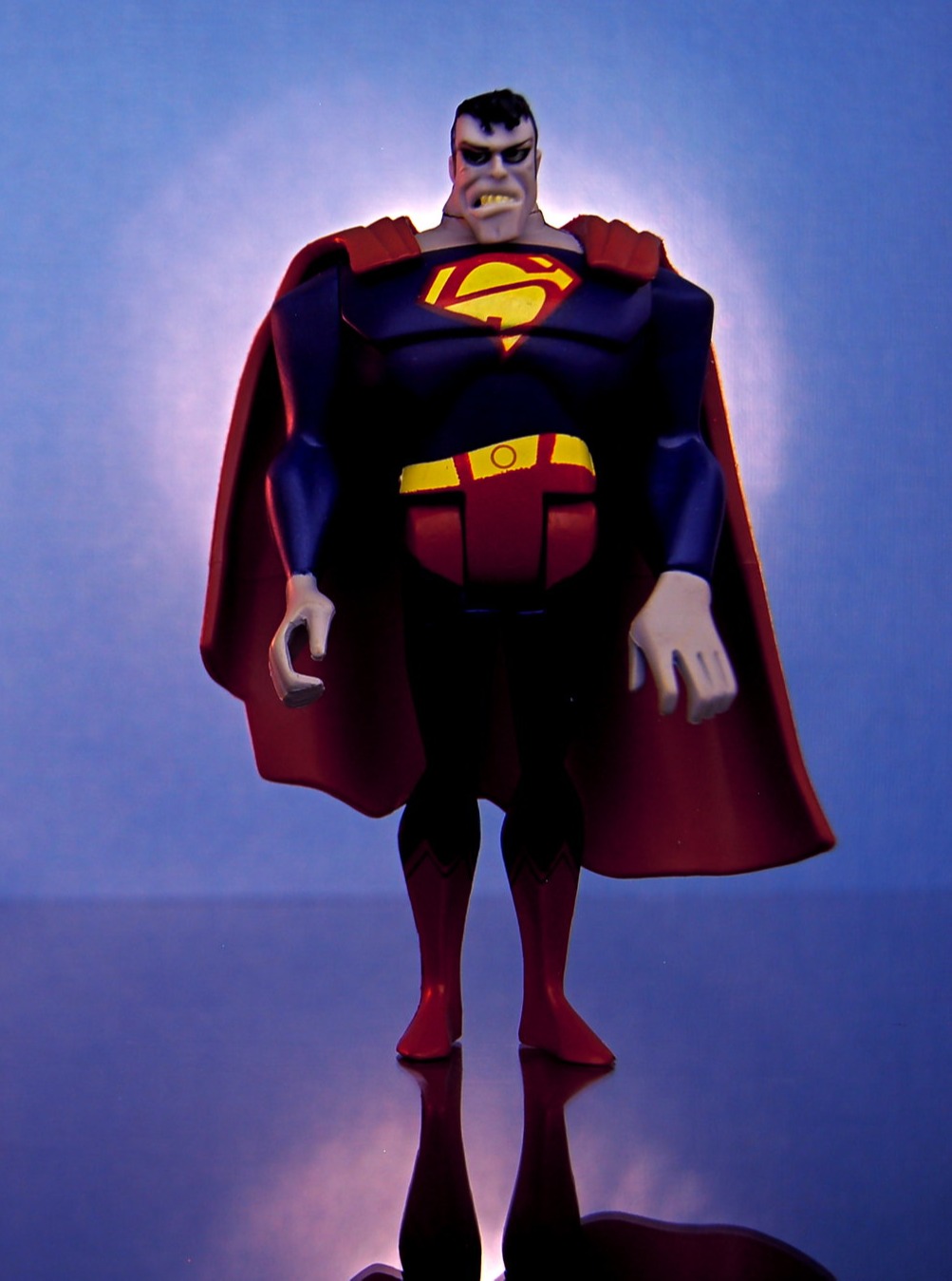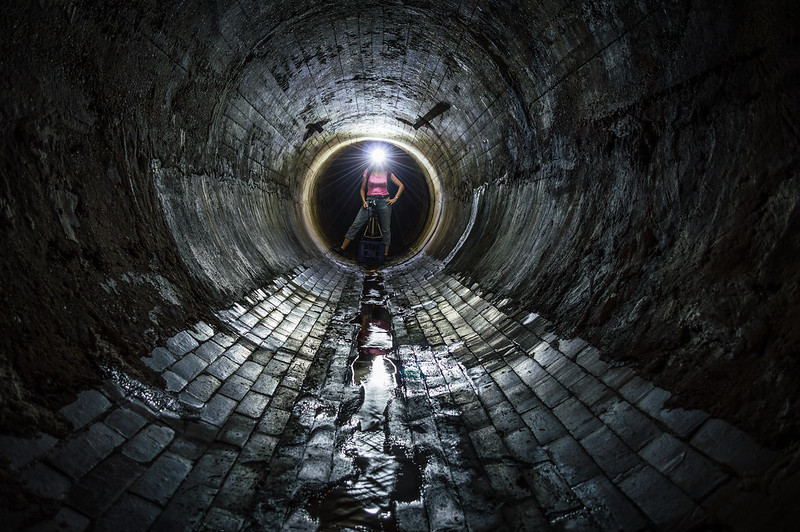How To Help Greatness Emerge
 Give me fewer people than I need. That will force me to come up with a better way.
Give me fewer people than I need. That will force me to come up with a better way.
Tell me what to do, but not how to do it. If you know how to do it, I’m not your person.
Give me far less time than I need – months not years, weeks not months, days not weeks. I will have no choice but to focus on the most important elements, and I will make decisions quickly because there is no time for indecision. And I will have fun.
Tell me you don’t know. That builds trust.
Give me bad tools, slow computers, and crappy infrastructure. That will require me to make magic.
Tell me the truth. That builds trust, too.
Give me a challenging task and tell me what I can’t do. That will allow me to do anything else.
Tell me why you want the problem solved and get out of the way. Everything will go better that way.
Give me a micro problem – move one atom, spin off one electron, make one photon, deliver one amp, limit me to one volt, give me a single gram. I won’t be intimidated, and I will be able to see the physics. Then, once solved, I will expand the solution to a size that fits our customers.
Tell me you need help, and I will help you.
Image credit — JD Hancock (Bizarro Superman)
Write to think or think to write?
 I started writing because I had no mentor to help me. I thought I could help myself grow. I thought I could write to better understand my ideas. I thought I could use writing to mentor myself. I tried it. It was difficult. It was scary. But I started.
I started writing because I had no mentor to help me. I thought I could help myself grow. I thought I could write to better understand my ideas. I thought I could use writing to mentor myself. I tried it. It was difficult. It was scary. But I started.
You will see the title, but you won’t see my scrap paper scribblings that emerge as I struggle to converge on a topic. Prismatic shapes, zig-zags, arrows pointing toward nothing, nested triangles, cross-hatched circles, words that don’t go together, random words. And when a topic finds me, I move to the laptop, but you won’t see that either.
You will see the sentences and paragraphs that hang together. You won’t see the clustered fragments of almost sentences, the disjointed paragraphs, the out-of-sequence logic, the inconsistency of tense, and the wrong words. You won’t see my head pressed to the kitchen table as I struggle to unshuffle the deck.
You will see the density of my writing. You won’t see the preening.
You will see a curated image and a shout out to the owner. You won’t see me spend 30 minutes searching for an image that supports the blog post obliquely.
You will see the research underpinning the main points, but you won’t see me doing it. Books on and off the shelf, books on the floor, technical papers in my backpack, old presentations in forgotten folders, YouTube, blogs, and podcasts. Far too many podcasts.
You will see this week’s blog post on Wednesday night, Thursday morning, or Thursday afternoon, depending on your time zone. You won’t see the 750+ blog posts from 15 years of Wednesdays.
When it was time to send out my first blog post, I was afraid. I questioned whether the content was worthy, whether I was right, and whether it made sense. I struggled to push the button. I hesitated, hesitated again, and pushed the button. And nothing bad happened.
When it was time to send out this blog post, I was confident the content was worthy, confident I was right, and confident that it made sense. I put myself out there, and when it was time to hit the button, I did not hesitate because I wrote it for me.
Image credit — Charlie Marshall
Do More Than Keep The Score
 Sometimes when I have a good idea, my body recognizes it before my mind does. I believe my body has been doing this since I was young, but only over the last five years have I developed sufficient body awareness to recognize the sensation my body generates. And now that I know the sensation is a signal, I know my body knows more than I do.
Sometimes when I have a good idea, my body recognizes it before my mind does. I believe my body has been doing this since I was young, but only over the last five years have I developed sufficient body awareness to recognize the sensation my body generates. And now that I know the sensation is a signal, I know my body knows more than I do.
My body’s signaling system is usually triggered during a conversation with someone I trust. While they are speaking to me, one or two of their words help my body flip the “knowing switch” and send its signal. Sometimes I stop listening and wait for the idea to come to my awareness. Sometimes I say out loud, “My body thinks there’s something important in what you said.” Sometimes the signal and idea come as a pair, and I tell my friend about the idea after they finish their sentence. All this takes some time for my coworkers and friends to understand and become comfortable.
My body can also send signals when it recognizes wrong paths or approaches that will cause conflict or confusion. It’s a colder sensation than the one described above, and the coldness distinguishes it as a signal of potential wrongness, conflict, or confusion. Like above, it’s usually triggered during a conversation where a coworker’s words help my body flip its knowing switch and send the cold sensation. Sometimes I stop listening and wait for the knowing to arrive. Sometimes I acknowledge I just received a knowing signal. And sometimes I tell my friend about the knowing as soon as there’s an opening. This, too, takes time for others to understand and become comfortable.
For my body to be able to do this for me, it must be well-rested, well-exercised, and grounded. To do this, my body must be standing on emotional bedrock.
I think I’m more effective because I can connect with my body’s signals. I can become aware of better ideas, I can become aware of skillful approaches, and I can become aware of ways to protect my friends from conflict and confusion.
Bessel van der Kolk says The Body Keeps The Score, and I agree. And with deep calm and awareness, I think the body can do much more.
Image credit — darkday
How To Put The Business Universe On One Page
 When I want to understand a large system, I make a map. If the system is an ecosystem, I combine Wardley Maps by Simon Wardley with Wide Lens / Winning The Right Game by Ron Adner. On Wardley maps, activities and actors are placed on the map, and related elements are connected. On the left are infant and underdeveloped elements, and on the right are fully developed / commodity elements. It’s like an S-curve that’s been squished flat.
When I want to understand a large system, I make a map. If the system is an ecosystem, I combine Wardley Maps by Simon Wardley with Wide Lens / Winning The Right Game by Ron Adner. On Wardley maps, activities and actors are placed on the map, and related elements are connected. On the left are infant and underdeveloped elements, and on the right are fully developed / commodity elements. It’s like an S-curve that’s been squished flat.
Wide Lens prompts you to consider co-innovation (who needs to innovate for you to be successful) and adoption (who needs to believe your idea is a good one). Winning The Right Game makes you think through the sequence of attracting partners like a visual time-lapse of the ecosystem’s evolution. This is a killer combination that demands you put the whole system on one page – all the players/partners, all the activities sorted by maturity, all the interactions, and the evolution of the partner network and maturity of the system elements. This forces a common understanding of the ecosystem. There’s no way out. Did I say it must fit on one page?
When the large system is a technological system, I make a map. I use the best TRIZ book (Innovation On Demand) by Victor Fey. A functional analysis is performed on the system using noun-verb pairs that are strung together to represent how the system behaves. If you want to drive people crazy, this is the process for you. It requires precise words for each noun (element) and verb (action) pair, and the pairs must hang together in a way that represents the physical system. There can be only one description of the system, and the fun and games don’t stop until the team converges on a single representation of the system. It’s all good fun until someone loses an eye.
When I want to understand a business/technology/product/service offering that has not been done before (think startup), I use Lean Canvas by Ash Maurya. The Lean Canvas requires you to think through all elements of the system and forces you to put it on one page. (Do you see a theme here?) Value proposition, existing alternatives, channel to market, customer segments, metrics, revenue, costs, problems, and solutions – all of them on one page.
And then to blow people’s minds, I combine Wardley Maps, Wide Lens, Winning The Right Game, functional analysis of TRIZ, value in action, and Lean Canvas on one page. And this is what it looks like.

Ash’s Lean Canvas is the backplane. Ron’s Wide Lens supports 6 (Channel), forcing a broader look than a traditional channel view. Ron’s Winning The Right Game and Simon’s Wardley Map are smashed together to support 2 (Existing Alternatives/Problems). A map is created for the existing system with system elements (infants on the left, retirees on the right) and partners/players, which are signified by color (red blob). Then, a second map is created to define the improvements to be made (red circles with arrows toward a more mature state). Victor’s Functional Analysis/System diagram defines the problematic system, and TRIZ tools, e.g., Separation Principles, are used to solve the problem.
When I want to understand a system (ecosystem or technological system), I make a map. And when I want to make a good map, I put it on one page. And when I want to create a new technological system that’s nested in a new business model that’s nested in a new ecosystem, I force myself to put the whole universe on one page.
Image credit – Giuseppe Zeta
Finding My Way
 I find my way.
I find my way.
I sometimes get caught in other people’s expectations. Aren’t their wants important too?
I can judge myself negatively even when good things happen. Wasn’t greatness possible?
I get angry when my expectations don’t control what the Universe does. Am I alone in this?
But I find my way.
I sometimes prioritize my feelings over others’. Is that good, bad, neither, or both?
I judge myself positively when good things happen. Maybe I had nothing to do with it?
I am happy when I have no expectations. But shouldn’t I expect that?
And I find my way.
I want what I don’t have. Who decides when enough is truly enough?
I get what I want, and then I worry about losing it. But doesn’t everything go away?
I sometimes don’t know what I want. Maybe I don’t want anything but don’t know it?
And I still find my way.
I love helping people. It’s like helping myself twice.
I love my family. I get meaning from them.
I love myself even when some parts of me don’t.
I find my way.
Image credit — Jan Mosimann
Good Teachers Are Better Than Good
 Good teachers change your life. They know what you know and bring you along at a pace that’s right for you, not too slowly that you’re bored and not too quickly that your head spins. And everything they do is about you and your learning. Good teachers prioritize your learning above all else.
Good teachers change your life. They know what you know and bring you along at a pace that’s right for you, not too slowly that you’re bored and not too quickly that your head spins. And everything they do is about you and your learning. Good teachers prioritize your learning above all else.
Chris Brown taught me Axiomatic Design. He helped me understand that design is more than what a product does. All meetings and discussions with Chris started with the three spaces – Functional Requirements (FRs) what it does, Design Parameters (DPs) what it looks like, and Process Variables (PVs) how to make it. This was the deepest learning of my professional life. To this day, I am colored by it. And the second thing he taught me was how to recognize functional coupling. If you change one input to the design and two outputs change, that’s functional coupling. You can manage functional coupling if you can see it. But if you can’t see it, you’re hosed. Absolutely hosed.
Vicor Fey taught me TRIZ. He helped me understand the staggering power of words to limit and shape our thinking. I will always remember when he passionately expressed in his wonderful accent, “I hate words!” And to this day, I draw pictures of problems and I avoid words. And the second thing he taught me is that a problem always exists between two things, and those things must touch each other. I make people’s lives miserable by asking – Can you draw me a picture of the problem? And, Which two system elements have the problem, and do they touch each other? And the third thing he taught me was to define problems (Yes, Victor, I know I should say conflicts.) in time. This is amazingly powerful. I ask – “Do you want to solve the problem before it happens, while it happens, or after it happens?” Defining the problem in time is magically informative.
Don Clausing taught me Robust Design. He helped me understand that you can’t pass a robustness test. He said, “If you don’t break it, you don’t know how good it is.” He was an ornery old codger, but he was right. Most tests are stopped before the product fails, and that’s wrong. He also said, “You’ve got to test the old design if you want to know if the new one is better.” To this day, I press for A/B testing, where the old design and new design are tested against the same test protocol. This is much harder than it sounds and much more powerful. He taught me to test designs at stress levels higher than the operating stresses. He said, “Test it, break it, and improve it. And when you run out of time, launch it.” And, lastly, he said, “Improve robustness at the expense of predicting it.” He gave zero value to statistics that predict robustness and 100% value to failure mode-based testing of the old design versus the new one.
The people I work with don’t know Chris, Victor, or Don. But they know the principles I learned from them. I’m a taskmaster when it comes to FRs-DPs-PVs. Designs must work well, be clearly defined by a drawing, and be easy to make. And people know there’s no place in my life for functional coupling. My coworkers know to draw a picture of the problem, and it better be done on one page. And they know the problem must be shown to exist between two things that touch. And they know they’ll get the business from me if they don’t declare that they’re solving it before, during, or after. They know that all new designs must have A/B test results, and the new one must work better than the old one. No exceptions.
I am thankful for my teachers. And I am proud to pass on what they gave me.
Image credit — Christof Timmermann
What makes a strategic plan strategic?
 X: We need a strategic plan.
X: We need a strategic plan.
Me: Why do you need one of those?
X: Everybody needs a strategic plan.
Me: Okay. That didn’t work. Let me try it another way. What makes a plan strategic?
X: You start with a strategy and you create a plan to make it happen over the next three years.
Me: So, you plan out the next three years?
X: Yes. Or four.
Me: Doesn’t the plan assume you know how the Universe will behave over the next three years?
X: We know our market, we know our customers, we know our technology, and we make a three-year plan.
Me: And what if something changes, like COVID, tariffs, or a new competitor brings to market something that obsoletes your best product?
X: You can’t plan for that.
Me: Exactly.
X: You’re talking in circles! What do you mean?
Me: If your three-year plan can’t plan for unplanned things, what kind of plan is that?
X: I told you. It’s a strategic plan.
Me: Hmm. Let me try that again. What happens when something unexpected arises and your plan needs to change?
X: It’s a strategic plan. Those don’t change.
Me: Arrg. Do you mean the plan should change, but you don’t make the change? Or strategic plans never change?
X: Strategic plans don’t change because they’re strategic. We put a lot of time into creating them.
Me: They don’t change because they take a lot of time and effort to create?
X: Well, yes. We have long planning meetings, and our best people spend a lot of time creating it.
Me: Do you think the Universe cares how long it took you to create your plan?
X: There you go again with the Universe thing.
Me: What I mean by that is there are many factors outside your control. It’s a big world out there. And you can’t plan for everything.
X: What do you mean? We put everything in the strategic plan.
Me: That’s not the type of everything I’m talking about. I’m talking about things outside your control that you cannot possibly know.
X: Are you saying we don’t know what we’re doing?
Me: No, I’m saying you know everything you’re going to do over the next three years. And that’s the problem.
X: You are frustrating. First you tell me it’s impossible to plan for everything, then you tell me we have a problem because we plan for everything. What’s wrong with you?
Me: That’s the right question. There’s a lot wrong with me. I have a good idea that turns out to be wrong, so I change my plan. I think I understand what’s going on, but I learn that I’m wrong, so I change my plan. I have a plan, but something unexpected happens and turns my plan from good to wrong, so I change it, even if the plan is strategic, whatever that means.
Image credit — Geoff Henson
Change the plan or stay the course?
 Plans are good, until they’re not. The key is knowing when to stay the course and when to adjust the plan.
Plans are good, until they’re not. The key is knowing when to stay the course and when to adjust the plan.
The time horizons for strategic plans or corporate initiatives can range from two to five years. To ensure we create the best plans, we assign the work to our best people, we provide them with the best information, and we ask them to use their best judgment. As input, we assess market fundamentals, technology trends, customer segments, our internal talent, our partners, our infrastructure, and our processes. We then set revenue targets and create project plans and resource allocation plans to realize the revenue goals. And then it’s go time.
We initiate the projects, work the plans, and report regularly on the progress. If the progress meets the monthly goal, we keep going. And if the progress doesn’t meet the monthly goal, we keep going. We invested significant time and effort into the plan, and it can be politically difficult, if not bad for your career, to change the plan. It takes confidence and courage to call for a change to a strategic plan or a corporate initiative. But two to five years is a long time, and things can (and do) change over the life of a plan.
A plan is created with the best knowledge available at the time. We assess the environment and use the knowledge to set the financial requirements for the plan. When the environment and requirements change, the plan should change.
Before considering any changes, if we learn that the assumptions used to create the plan are invalid, the plan should change. For example, if the resource allocation is insufficient, the timelines should be extended, resources should be added, or the scope of the work should be reduced. I think changing the plan is responsible management, and I think it’s irresponsible management to stay the course.
The environment can change in many ways. Here are five categories of change: tariffs, competition, internal talent (key people move on), new customer learning, and new technical learning (e.g., more technical risk than anticipated). Significant changes in any of these categories should trigger an assessment of the plan’s viability. This is not a sign of weakness. This is responsible management. And if the change in the environment invalidates the plan’s assumptions, the plan should change.
The specification (revenue targets) for the plans can change. There are at least two flavors of change: an increase in revenue goals or a shorter timeline to achieve revenue goals, which are usually caused by changes to the environment. And when there’s a need for more revenue or to deliver it sooner, the plans should be assessed and changed. Again, I think this is good management practice and not a sign of failure or weakness. When we realize the plan won’t meet the new specification, we should modify the plan.
When we learn the assumptions are wrong, we should change the plan. When the environment changes, we should change the plan. And when the specification changes, we should change the plan.
Image credit — Charlie Day
Fight Dilution!
 With new product development projects, there is no partial credit. If you’re less than 100% done, there are zero sales. 90% done, zero sales. 95% done, zero sales. We all understand the concept, but our behavior often contradicts our understanding. You have too many projects, and our focus on efficiency is to blame.
With new product development projects, there is no partial credit. If you’re less than 100% done, there are zero sales. 90% done, zero sales. 95% done, zero sales. We all understand the concept, but our behavior often contradicts our understanding. You have too many projects, and our focus on efficiency is to blame.
Under the banner of efficiency, we run too many projects in parallel, and our limited resources become spread too thinly over too many projects. Project timelines grow, launch dates are pushed out, and revenue generation is delayed. And because there’s a shortfall in revenue, we start more projects to close the gap. That’s funny.
In short, we’ve morphed Start, Stop, Continue into Start, Start, Start.
Here’s a process to help you stop starting and start finishing.
Open a spreadsheet and list all your projects for the year. At the top of the column, list the projects you’ve completed. Below the completed projects, list your active projects, and below them, list your future (not yet started) projects. Highlight the completed projects and the active projects, and set the print area. Then, select “print on both sides of the page.” When you print the file, the future projects will be printed on the back of the page. This will help you focus on the completed and active projects and block you from trying to start a project before finishing one.
Now, go back to the top of the spreadsheet and select the completed projects and change the font to “strike through.” This will allow you to read the project names and remind yourself of the projects you completed. You can use this list to justify a strong performance rating at your upcoming performance review.
Skip down to the active projects and categorize them as fully staffed or partially staffed. Change the font color to red for the partially staffed projects and move them to the second page with the future projects. Print out the spreadsheet.
The completed projects will be at the top of the page in strike-through font, and the short list of fully staffed projects is listed below them in normal font. On the back of the page, the partially staffed projects are listed in red, and the future projects are listed below them. And now you’re ready to realize the power of the two-sided printout.
Step 1. Ignore the projects on the back of the page (under-staffed and yet to be started projects). They’re still on the do-do list, but they’ll wait patiently on the back of the page until resources are freed up and allocated.
Step 2. Finish the fully staffed projects on the front page.
Step 3. When you finish a project, change the font to “strike-through” and create a list of the freed-up resources.
Step 4. Flip to the back of the page, allocate the freed-up resources to one of the projects, and move the fully staffed project to the front of the page.
Step 5. Proceed to Step 2.
This is a straightforward process, but it requires great discipline.
Here’s a mantra to repeat daily – I will finish a project before I start the next one.
Image credit — iggyshoot
Design is more than the shapes, the colors, and what it looks like.
 Design takes responsibility for what it does – the functional or emotional goodness, the data that demonstrates the new one is better than the old one, and for the progress made by customers.
Design takes responsibility for what it does – the functional or emotional goodness, the data that demonstrates the new one is better than the old one, and for the progress made by customers.
Design takes responsibility for what it’s made of – the materials, their condition, their pre-processing, and their post-processing.
Design takes responsibility for the geometry – the size and shape of the parts and how they fit together.
Design takes responsibility for how it’s made – the manufacturing processes, the automation, the manual assembly, and the variation.
Design takes responsibility for how it’s packaged – the cardboard and protective elements that enable the product to arrive undamaged.
Design takes responsibility for how it’s serviced – the troubleshooting tools, processes, and the real-time data to assess the problem from a remote location.
Design takes responsibility for the recipe – the documentation for all elements so that it can be reproduced.
Design takes responsibility for cost – the rollup of all the elements and activities required by the customer, which must be far less than the price paid by the customer.
Image credit – Pedro
Two Tricks to Improve Understanding of New Ideas
 When you want someone to understand your new idea, draw a picture for yourself. Set the constraint that you cannot use words on the page. Shapes, arrows, cartoons – yes. Words – no. Once you’re convinced your one-pager captures your idea, set another constraint. When you show your picture to someone, you cannot speak. Your one-page picture must stand on its own. I think you’ll find that this second constraint will cause you to improve your image, which will help others (and you) better understand your idea. You can use your words when you explain your one-pager to your target audience, which will improve clarity and understanding.
When you want someone to understand your new idea, draw a picture for yourself. Set the constraint that you cannot use words on the page. Shapes, arrows, cartoons – yes. Words – no. Once you’re convinced your one-pager captures your idea, set another constraint. When you show your picture to someone, you cannot speak. Your one-page picture must stand on its own. I think you’ll find that this second constraint will cause you to improve your image, which will help others (and you) better understand your idea. You can use your words when you explain your one-pager to your target audience, which will improve clarity and understanding.
When you want someone to understand that your new idea is possible, build a prototype and do a demo. Use your one-pager to create a storyboard of the demo. The storyboard can be a series of cartoons that describe what will happen during the demo. And like with the one-pager, your storyboard cannot use words. And once you think your storyboard communicates your idea, set the constraint that you cannot speak during the demo, and try to improve the storyboard to support a no-word demo. You can use your words during the demo to further improve clarity and understanding.
Make no mistake, the one-pager and the storyboard are for you. They will help you better understand your idea so you can help people understand it better.
Image credit – Jennifer Moo
 Mike Shipulski
Mike Shipulski